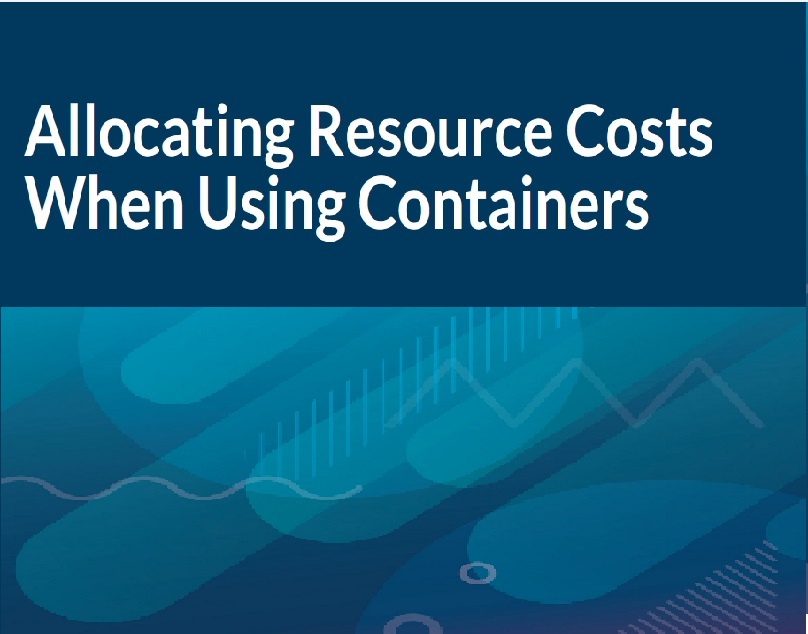Containers have become an integral part of modern software development and deployment. They offer a lightweight and efficient way to package and run applications consistently across different environments, making it easier to develop, test, and deploy software. However, as organizations adopt containerization, they face the challenge of allocating resource costs effectively. In this article, we will explore the importance of resource cost allocation in containerized environments and discuss various strategies to achieve it.
The Importance of Resource Cost Allocation
Effective resource cost allocation is crucial for several reasons:
- Resource Optimization: Containers enable organizations to make efficient use of computing resources, but without proper allocation, they may still over-provision or underutilize resources. Allocating costs helps in optimizing resource usage by identifying where resources are most needed and where they can be scaled back.
- Budget Management: Accurate cost allocation is essential for financial planning and budget management. It allows organizations to track and allocate costs to specific projects, departments, or teams, enabling them to make informed decisions about resource allocation and scaling.
- Fairness: In a multi-tenant or multi-team environment, fair resource cost allocation is critical to ensure that each team or project pays its fair share. This promotes transparency and accountability within the organization.
- Compliance: Many organizations must adhere to regulatory and compliance requirements that mandate detailed cost allocation. Failing to do so can result in legal and financial consequences.
Strategies for Allocating Resource Costs
Achieving accurate resource cost allocation in a containerized environment can be challenging due to the dynamic nature of containers. Here are some strategies to help you effectively allocate resource costs:
1. Container Labeling and Tagging
Labeling and tagging containers with relevant metadata can simplify cost allocation. You can assign labels to containers based on project, team, environment, or any other relevant criteria. Container orchestration platforms like Kubernetes and Docker Swarm allow you to attach labels and annotations to containers, making it easier to track resource usage and costs.
2. Resource Quotas and Limits
Set resource quotas and limits for containers to prevent over-provisioning. By specifying resource constraints (CPU, memory, storage) for each container, you can ensure that resources are allocated fairly and that no single container monopolizes available resources. Monitoring tools can help you track resource usage against these limits.
3. Container Orchestration Platforms
Container orchestration platforms such as Kubernetes provide built-in features for resource management and cost allocation. You can create namespaces or projects to isolate resources for different teams or projects. Kubernetes also offers resource quota and limit management, making it easier to allocate costs based on resource consumption.
4. Resource Monitoring and Logging
Implement robust monitoring and logging solutions to track container resource usage over time. Tools like Prometheus, Grafana, and ELK (Elasticsearch, Logstash, Kibana) can help you collect and analyze resource metrics and logs. By correlating this data with container labels or metadata, you can allocate costs accurately.
5. Chargeback and Showback Models
Consider implementing chargeback or showback models to allocate costs to teams or projects. Chargeback involves directly billing teams or departments based on their resource consumption, while showback provides cost visibility without actual billing. Both models encourage resource-conscious behavior and transparency.
6. Cost Allocation Tools
There are specialized cost allocation tools and platforms available that can automate the process of tracking and allocating container resource costs. These tools integrate with container orchestration platforms and cloud providers to provide real-time cost insights and reporting.
7. Continuous Optimization
Regularly review and optimize your container resource allocation strategies. As workloads change and evolve, it’s essential to adjust resource quotas and limits, update container labels, and refine cost allocation models to reflect the current state of your environment.
Conclusion
Allocating resource costs in a containerized environment is a critical aspect of efficient resource management, financial planning, and maintaining transparency and fairness within organizations. By using strategies such as container labeling, resource quotas, monitoring tools, and cost allocation models, organizations can gain better control over their containerized workloads and ensure that resources are used effectively while minimizing costs. Additionally, investing in automation and specialized tools can streamline the cost allocation process and provide real-time insights into resource consumption, facilitating informed decision-making.
